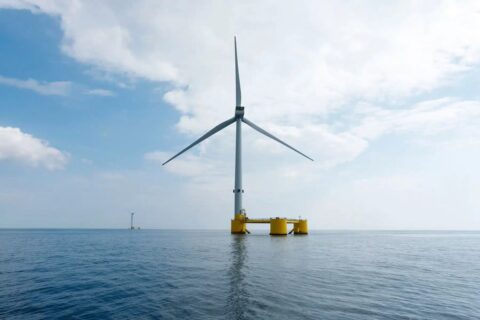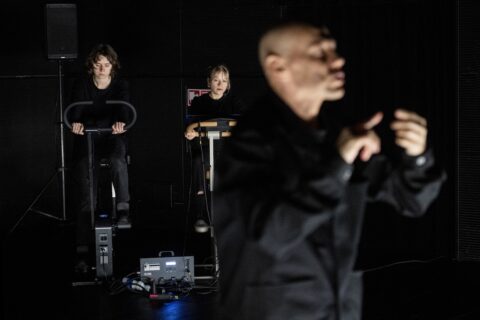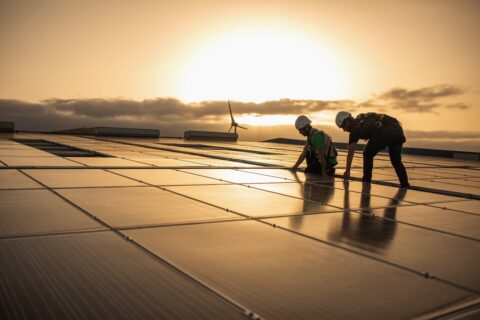
Small, flexible generators which convert movement into electricity could soon be the future of free and unlimited energy, thanks to a breakthrough in energy-harvesting technology. This innovation could impact both wearables and implantables, from textiles to medical devices, as well as portables such as mobile phones and tablets, or even larger-scale installations such as smart floors and pavements.
Scientists from Loughborough University and the University of Surrey have created a unique device based on triboelectric nanogenerators (TENGs) which generate electricity from motion — in much the same way as static electricity is produced.
Until now, using TENGs has been incompatible with many day-to-day electronic devices due to their inability to produce a constant current. Now, a team of researchers, led by Dr Ishara Dharmasena, of Loughborough’s School of Mechanical, Electrical and Manufacturing Engineering, in collaboration with Advanced Technology Institute of the University of Surrey, have found a way to produce a direct current (DC) from a unique TENG design, creating a steady flow of electricity and opening up the potential for real-world applications.
In terms of size, TENGS can measure anything from just millimetres to metres square, explains Dr Dharmasena:
“Triboelectric nanogenerators are effectively small scale, flexible, and sometimes stretchable, energy generators that convert movements in our surroundings such as human motion, machine vibrations, vehicle movements, wind and wave energy into electricity. They are extremely versatile and can be constructed in a wide variety of shapes, weights and sizes.
“Unlike conventional mechanical energy harvesting methods, such as piezoelectric or electromagnetic devices which contain heavy and bulky components, toxic materials and rigid structures, TENGs can be constructed using low-cost, lightweight, non-toxic and flexible materials.
“The potential applications include the next generation wearable and implantable electronics, smart textiles, medical devices, IoT- and 5G-related sensors, smart pavements, smart floors, mobile phones and tablets.”
TENGs are made from dielectric materials, such as plastics, which accumulate static charge when they rub against each other. As these charged materials move back-and-forth, they generate uneven instantaneous alternating electrical current (AC) signals. The current is then further processed and stored in a battery or capacitor to be used when needed.
Therefore, a typical TENG produces sharp positive and negative current peaks during its operation, which means that converting the alternating current into a direct flow involves phase shifting, says Dr Dharmasena:
“In this technology, an assembly of TENG units (poles) are used as a single device, where they are systematically excited to obtain a phase difference among their outputs. The outputs with different phases are then superimposed to obtain the final DC output signal. We have demonstrated the applicability of this technology by continuously lighting a set of LED lights and a photodetector.
“This new invention overcomes one of the most critical challenges of TENG technology and will enable countless real-time low-power applications in wearable electronics, such as IoT-related applications and smart sensing, getting us one step closer towards a sustainable, autonomous and portable energy source.”
With its main campus in Leicestershire and a second in London, Loughborough is consistently ranked in the top 20 of UK universities in the Times Higher Education ‘table of tables’ and is in the top 10 in England for research intensity. In recognition of its contribution to the sector, Loughborough has been awarded seven Queen’s Anniversary Prizes.
The Loughborough University London campus is based on the Queen Elizabeth Olympic Park and offers postgraduate and executive-level education, as well as research and enterprise opportunities.
Further Reading:
- Paper on Direct current contact-mode triboelectric nanogenerators via systematic phase shifting in Nano Energy.
- More about the School of Mechanical, Electrical and Manufacturing Engineering at Loughborough University.
- More about Loughborough University and the Loughborough University London campus.
>>> Do you have sustainability news to broadcast and share? If you would like to see it featured here on SustMeme, please use these Contact details to get in touch and send us your Press Release for editorial consideration. Thanks.






